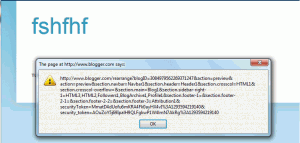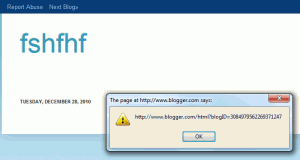02.03
[Note: According to Google, I was not the first person to report
this vulnerability to them. If the original reporter cares to come
forward, I’ll be more than happy to cite their work in this writeup
![]() ]
]
Summary
Blogger’s Design Preview functionality served up author-generated content in the context of blogger.com, allowing an author to perform an XSS attack against a blog administrator.
How did it work?
Blogger is designed to allow authors to include arbitrary content in their blog posts. As the Google Security Team explains
Blogger users are permitted to place non-Google as well as Google JavaScript in their own blog templates and blog posts; our take on this is that blogs are user-generated content, in the same way that a third party can create their own website on the Internet. Naturally, for your safety, we do employ spam and malware detection technologies — but we believe that the flexibility in managing your own content is essential to the success of our blogging platform.
Note: when evaluating the security of blogspot.com, keep in mind that all the account management functionality – and all the associated HTTP cookies – use separate blogger.com and google.com domains.
So, for an attack on Blogger to be anything more than an annoyance, the attack has to target blogger.com or google.com as opposed to the subdomain where the blog is hosted.
In this case, there was a vulnerability in how user-generated content was presented on Blogger’s backend, which is served from blogger.com. The vulnerability involved Blogger’s Design Preview functionality, which is used by administrators to test layout changes. The preview of the blog’s content was being served from blogger.com, not from the blog’s (sub)domain. As a result, any JavaScript or other malicious content contained on the page (for instance, from a post written by an author) would be run in the context of blogger.com, exposing cookies and other sensitive information.

The JavaScript in the post creates an alert box with the value of document.location. As you can see, the JavaScript was executed on blogger.com

Same JavaScript as the example above, but executed using the Preview button on the Edit HTML page of the Design section
This vulnerability required the attacker to have author level (or higher) privileges on the same blog as the target, limiting its effectiveness. However, a malicious author could have used this vulnerability to perform privilege escalation via a CSRF attack, giving themselves administrator level privileges on the blog.
More Information
The vulnerability mentioned here has been confirmed patched by the Google Security Team. I owe them a ton of thanks for organizing this program and giving me a chance to improve my skills.
Interested readers are encouraged to take a look at other vulnerabilities I’ve reported under Google’s Vulnerability Reward Program.
Comments